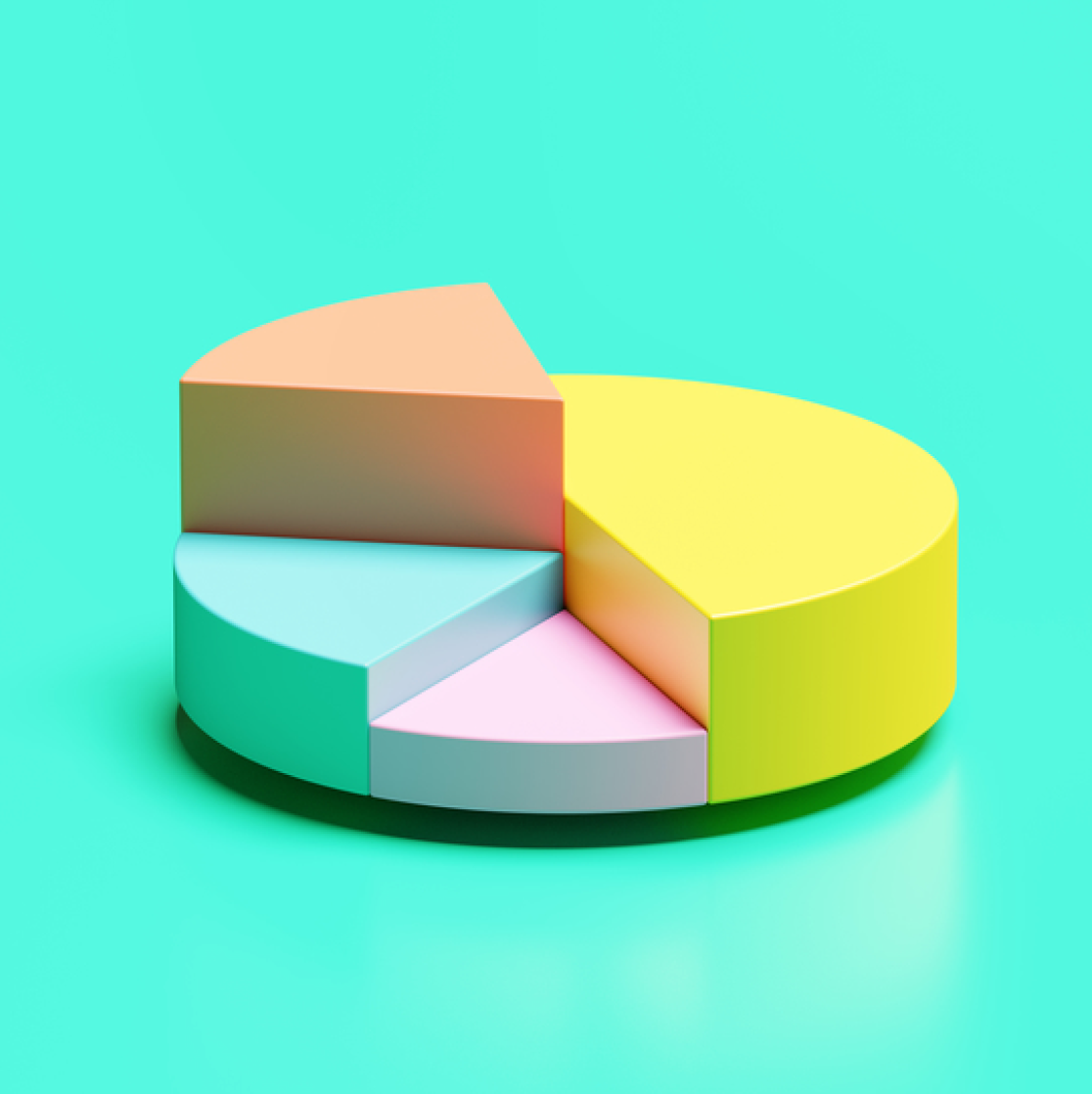Data Analyst vs. Data Scientist: What’s the Difference?
Understanding Data Roles: Similar yet Distinct.

Data analytics and data science jobs are among the fastest-growing roles in the ever-growing tech industry. Next only to AI and machine learning, data science and analytics are predicted to be the highest demand and salaried positions.
According to the U.S. Bureau of Labor Statistics, the average growth rate for employment of Data Scientists is 36% between the years 2021 – 2031. This is considered much higher than the average job growth rate. And businesses are taking note: only last year, more than half of businesses around the world considered data analytics a core component of their operations.
If you’re looking for a career change, or just starting out and want to enter the tech industry, it can be hard to know where to start when selecting what role would be best for you. For the purpose of this article, we’re going to explore the differences between Data Analysts and Data Scientists.
We’ll explain what the responsibilities are, what education you need, the roles you can apply for, the salaries for each position, and how you get the best training no matter what career stage you’re at. By the end of this article, you’ll be equipped with the information you need so you can make the most informed decision.
What is a Data Analyst?
A Data Analyst is responsible for gathering and examining existing data in order to identify trends and metrics for businesses. Companies can ask Data Analysts to answer general questions or solve specific problems for them based on data that already exists. A Data Analyst would then perform a statistical analysis where they collect data and then eliminate irrelevant or unusable information. They then take the usable data and deliver it in a way that’s easy to understand, transforming hard-to-comprehend numbers into graphs and charts to easily communicate data sets to their clients. Companies can then make informed business decisions based on that information.
Data analysts can work as independent contractors, but many work as part of a company, helping to contribute towards a common goal.
What is a Data Scientist?
A Data Scientist designs and implements mathematical algorithms using statistical data, machine learning, programming or coding, and other methodologies. The results include tools that companies can then use to predict and use data. They develop automated systems, new methods, and frameworks for the data so businesses can extract the correct information to solve problems for their company. Their process essentially involves taking massive amounts of big data gathered by their client or other sources, extracting what they need, and interpreting it. They’re also responsible for making sure to visualize the data in a way that their team is clear on the findings and can make decisions based on those findings.
Data scientists create models and systems for a company so they can better extract and understand the data collected.

What Is the Difference Between a Data Analyst vs. a Data Scientist?
It’s a common perception that Data Scientists work on the future while Data Analysts work on the past. However, it goes much deeper than that. Data Scientists and Data Analysts have the same job goals – they produce insights out of data and allow data-driven decision-making (either by algorithms or with a person making a decision based on the insights drawn from the data). The biggest differentiator between the two is the set of tools they use. Usually, Data Scientists use more advanced and sophisticated statistical and machine learning models to analyze and build predictive models. Data Analysts will use more simple statistical models and will focus on visualizing existing trends and projections based on simpler methods.
Although this is a broad view of what makes these two roles different, there are other small ways in which Data Analysts are different from Data Scientists. Let’s further explore the differences between these two roles.
Job Tasks: Data Analyst vs Data Scientist
A Data Analyst utilizes mined and cleaned data to solve business problems using skills like programming languages, databases, statistical analysis, and data visualization software.
On a day-to-day basis their tasks can be:
- Working with other organizational leads to brainstorm data and problem-solving needs
- Writing SQL queries for data warehouses
- Extracting, cleaning, and organizing data from many different sources for a well-rounded data set
- Analyzing data sets to notice trends and metrics that can be translated into action items for the organization
- Presenting data findings using easy-to-understand visual charts and graphs to help make data-driven decisions
- Supporting other company reports such as financial reports, KPIs, and dashboards with the data found
As part of their role, a Data Scientist is making predictions about the future with advanced data techniques. They build automations, like predictive modeling processes and machine learning algorithms, to help them accomplish the goal of mining large amounts of structured and unstructured data.
On a day-to-day basis their tasks can be:
- Designing experiments, machine learning algorithms, and predictive data models to mine big data sets
- Gathering, cleaning, processing, and storing raw data with the tools they’ve designed
- Utilizing this data to aid product development, strategize marketing techniques, increase revenue and customer satisfaction
- Building the tools that can be used for data visualization
- Automating data collection processes by writing and coding programmes
Whichever career path you choose, it’s always important to know what the daily tasks will be because loving the daily work is what will guarantee your success and happiness on the job.
Skills you need to become a Data Analyst or a Data Scientist
Education has evolved into the 21st century. You no longer need an undergraduate degree to achieve a high-skilled and well-paying job. While there are many education options available for those who want to become a Data Analyst or a Data Scientist, there are distinct skills that employers are looking for when hiring for these roles.
As a Data Analyst, you’re going to want hard skills like data management techniques, programming, databases, and statistical analytics and modeling. Most employers will expect proficiency in SQL and Python. Don’t worry if these terms make no sense to you yet. With the right training, you’ll learn everything you need to know in time. They’ll also be looking for soft skills like problem-solving, critical thinking, communication, and creativity.
Data Scientists are a little different. You will need a degree in a field like mathematics, computer science, or engineering. Because the expectation of Data Scientists is to build technical programs and systems, these degrees focus on technical skills instead of analytical skills. There are some employers who do expect their Data Scientists to have a Master’s or Ph.D.
Hard skills employers are looking for are a firm grasp of models and regressions, properties of distributions, statistical tests, data architectures, and machine learning techniques. For soft skills, same as for Data Analyst roles, employers want curiosity, critical thinking, and proactive problem-solving.
This role is generally considered a more advanced version of a Data Analyst.
The great news is that you can acquire all of these hard or soft skills in different educational settings, like online programs and bootcamps.
The Types of Roles for Data Analysts and Data Scientists
A Data Analyst can work in many different fields. Most industries need data analyzed to upgrade their systems and make important decisions.
Titles for Data Analysts include:
- Market Research Analyst
- Business Analyst
- Operations Research Analyst
- Information Security Analyst
- Medical and Health Care Analyst
- Management Analyst
This is a broad range of titles but, as we mentioned, you can work in a variety of industries from food production, to criminal justice, to fashion. This is what makes Data Analyst roles so appealing. If you have a passion for a certain field, let’s say fashion, you don’t necessarily have to go to fashion school. You can apply for roles directly in that industry and analyze their data.
Whatever your interests, data analytics can be your path to your dream job.
The roles available to a Data Scientist are going to be much more specialized than those of a Data Analyst. Because Data Scientists have very technical skills, not every industry is in need of the depth of data mining Data Scientists do.
Titles for Data Scientists include:
- Machine Learning Scientist
- Machine Learning Engineer
- Machine Learning Researcher
- NLP Data Scientist (Natural Language Processing)
- Quantitative Researcher (known term in algo-trade companies)
- AI Research Scientist
If you’re researching what field to enter, it’s a good idea to research the job titles mentioned above to get a good idea of what roles you may be interested in. Search tools like Indeed and LinkedIn are great to use if you want to learn more about the jobs available in these fields at your favorite company. Knowing what’s available before you choose your career path is a great way to get started in any field.
Salary Expectations for Data Analysts and Data Scientists
Both data analytics and data science have lots of room for growth when it comes to salary and responsibilities. The average annual salary for a Data Analyst is $64,000 and the average annual salary for a Data Scientist is $127,000.
As you can see, the average salary for a Data Scientist is higher. This is because a Data Analyst starts at a lower salary earlier in their career. As you progress through either role, the salaries begin to level out at a senior level. Also, a Data Scientist is more likely to get a higher salary because this role takes on greater responsibilities and expectations.
How Do You Choose Between a Data Analyst or Data Scientist Career?
Now that you have all of the information you need, you can feel empowered to make a decision. You can confidently weigh your options and choose between being a Data Analyst vs. a Data Scientist.
What it really comes down to is:
- How much time are you willing to spend on an educational path? You can become a Junior Data Analyst within 6 months through an online accelerated course. A Data Scientist will need a much bigger commitment to education with a postgraduate degree as a prerequisite.
- What are you most interested in? If analyzing data for different industries and relaying that data to help build a strong company sounds rewarding, then becoming a Data Analyst is the right path. If you’ve always loved computers and engineering projects, then becoming a Data Scientist could be your next career.
- Is earning potential a deciding factor for you? A Data Analyst can grow into a very comfortable salary, but it does take time to get there. A Data Scientist has a higher earning potential over the course of their career, but as mentioned, it can be an expensive career to pursue.
Just remember, there’s no ‘right’ choice when choosing your career path: only what works best for you. You can succeed in any career you choose, whether that be as a Data Analyst or a Data Scientist, or something else. Take the time you need to set your career goals, and go achieve them.






